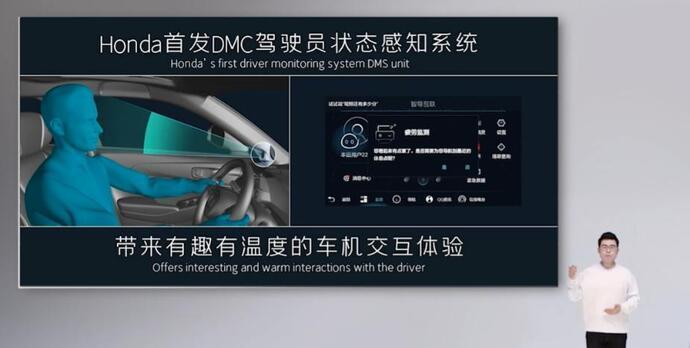
Recently, Honda China released two pure electric vehicles, both equipped with driver status perception systems. This system can accurately perceive driver fatigue driving, driving distraction and other behaviors, and bring intelligent safe driving experience through temperature human-vehicle interaction. Through the cooperation with Honda, SenseTime will continue to expand the application scenarios of smart cars with full-stack solutions.
"You look a little tired, do you need to navigate to the nearest break for you?" During the vehicle movement, when the driver state perception system detects the fatigue of the driver, it will send out hints through the "e:N OS" intelligent control ecosystem equipped with the vehicle, and at the same time give suggestions to help the driver find and alleviate the fatigue state in time. The system will also give reminders when the driver is distracted, driving on the phone and other dangerous driving behaviors.
Based on the infrared monocular camera built into the cabin, the "SenseTime" driver perception system can perceive the driver's expression, line of sight and posture action in real time, accurately determine dangerous driving behaviors such as fatigue, distraction, and dangerous actions, and quickly feedback the results to the driver state perception system, so as to achieve timely early warning and avoid the occurrence of dangerous situations. In addition, the system also applies SenseTime's face recognition technology, which can help users quickly log in to their personal car account and achieve various personalized functions and configurations.
In the first quarter of this year, SenseTime established the Smart Car Business Group to develop the smart car business with greater efforts, and is committed to building Absolute Shadow into an influential AI empowerment platform for the automotive industry. The relevant person in charge of the company said that the application of AI perception technology drives the evolution of the human-vehicle relationship from the passive interaction of "people controlling the vehicle" to the active interaction of "the vehicle actively reminds people", bringing a new experience of "the car understands people".
In the past two years, SenseTime has launched a child perception function and a cabin occupant health detection function. The child perception function has been mass-produced on many models such as Chery Jietu, which can effectively avoid the safety hazards caused by children staying alone in the car. The cabin occupant health detection function has also been designated by well-known domestic car companies, and related models are expected to be listed in the middle of this year.
SenseTime has also implemented ai digital human applications in the smart cabin scenario, bringing drivers a travel companion with virtual and real integration, thousands of people, and more interesting elements for human-vehicle interaction.
In the "2021 China Market Passenger Car Front-loading Cockpit AI Software Supplier Standard Capacity" list recently released by the Gaogong Intelligent Automobile Research Institute, SenseTime, Valeo and Baidu ranked in the top three. Under the growing trend of the frontload market for in-cabin vision AI applications, the competition between enterprises will become increasingly fierce.
With the accelerated popularity of L2+ and higher advanced driver assistance systems, the development of smart cars will be in the "man-machine co-driving" stage for a long time. Effective human-vehicle communication and interaction is expected to reduce various safety risks in the driving process.